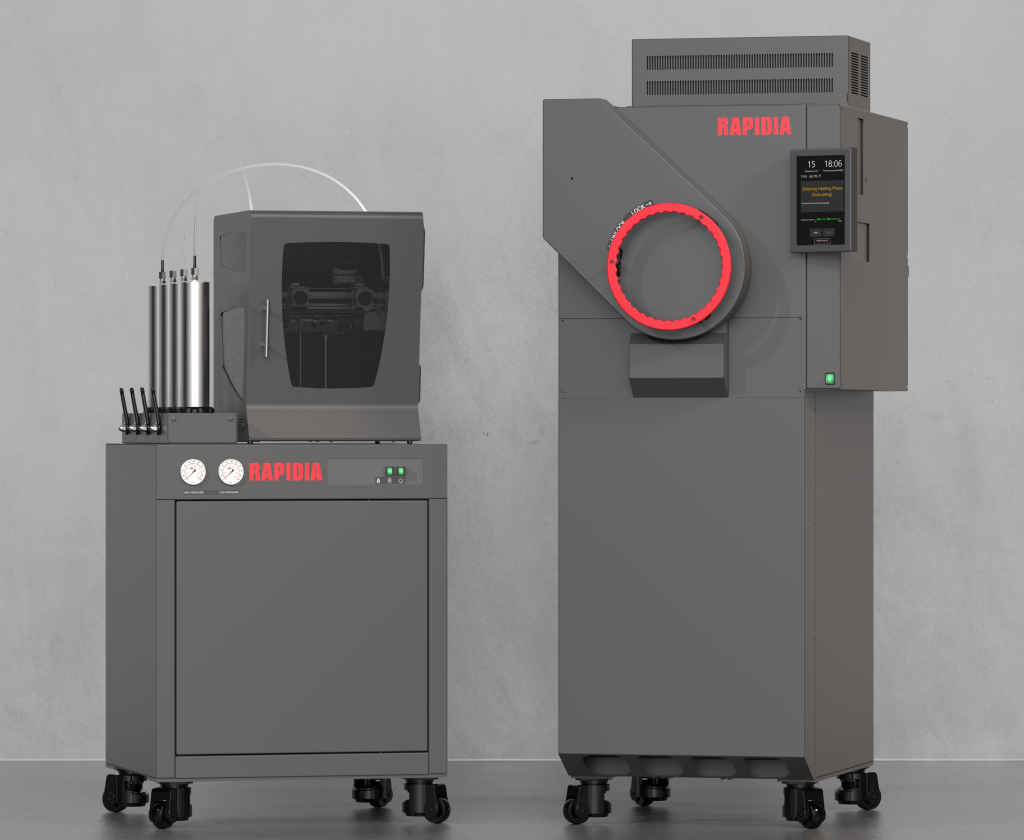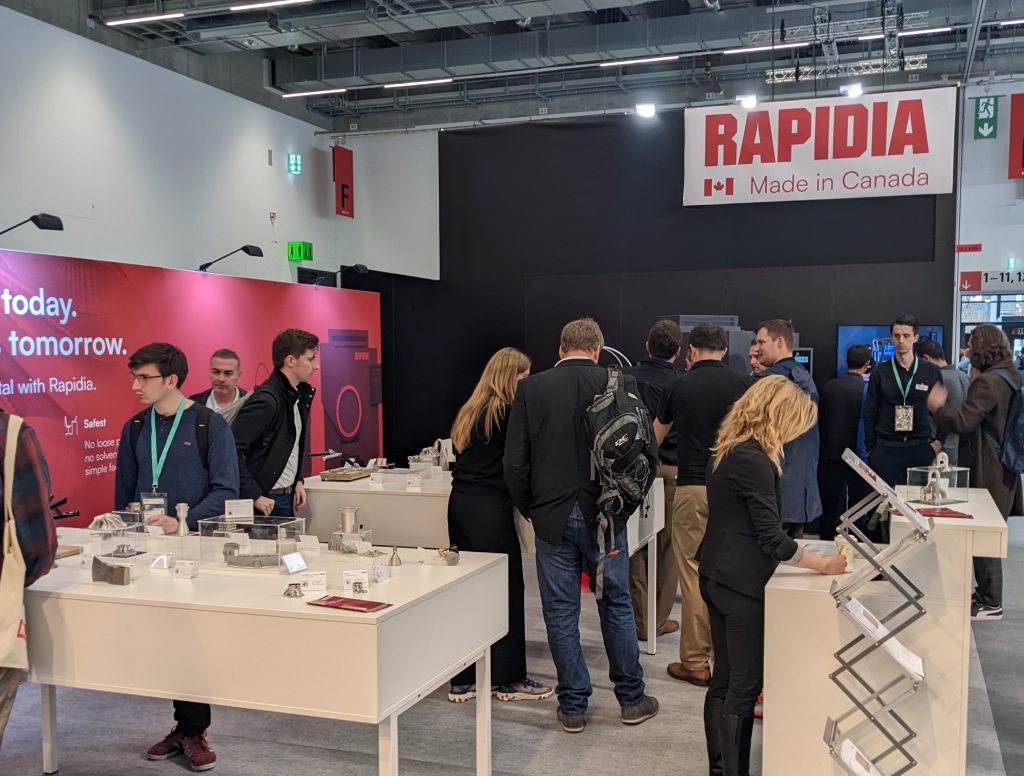The 3D Printing Industry Awards 2022 shortlists are now available for voting. Who will win the 2022 3DPI Awards? Have your say by casting your vote now.
Canadian 3D printer manufacturer Rapidia has announced plans to bring its “innovative metal extrusion technology” to the European market.
Rapidia’s two-part 3D printer and furnace system enables the layer-by-layer deposition of a unique water-based metal paste into complex parts, which don’t require debinding before sintering. Having given the compact machines behind its rapid manufacturing process a physical European debut at Formnext, the firm now plans to bring it to market there during the first quarter of 2023.
Rapidia’s metal extrusion technology
Since it was established in 2016, Rapidia has focused on developing a metal 3D printing technology that’s faster and more accessible than existing offerings, but still yields high quality parts. What it has come up with is a process whereby a paste-like feedstock, made up of metal powder, water and a tiny amount of binder, is deposited onto a heated bed, on which its water content is evaporated away.
As opposed to many of the system’s competitors, which rely on metal powders bound by polymers, it produces green parts that don’t need debinding. This not only makes Rapidia’s process much faster, but ensures that its users won’t have to invest in large, expensive debinding equipment, making it comparatively ‘office-friendly.’
Working with a water-based paste also provides design advantages. Parts made from such a feedstock can be combined into more consolidated, complex builds. The technology therefore creates opportunities for users to print parts into sections, which can be moistened and stacked on top of one another into complete builds.
Thus far, the company has brought this process to market via the launch of both a proprietary 3D printer and a furnace, designed to offer partial pressure sintering in argon and yield parts with excellent metallurgy. Together, these machines ultimately enable the printing and direct sintering of components, through a process that in many cases takes just 16-24 hours from start-to-finish.

Bringing Rapidia 3D printing to Europe
Rapidia’s efforts to commercialize its technology initially saw it partner with ExOne during 2020, in a collaboration which yielded the Metal Designlab and X1F furnace. Though slightly bigger than Rapidia’s original 3D printer, the Metal Designlab remained small enough to target the office-friendly space, while providing users with another means of adopting its two-stage additive manufacturing process.
When the deal was signed, it also included a stipulation that ExOne would have first refusal over any future acquisition of its Vancouver-based partner. However, following Desktop Metal’s acquisition of ExOne, the two firms have now parted company and Rapidia has returned to the independent distribution of its hardware and feedstock.
On the research front, Rapidia says its technology’s open nature continues to allow for the development of new sintering cycles and specialized pastes, and in order to capitalize on the interest this is helping generate, it has given its portfolio a physical debut at Formnext, ahead of its first shipments to European clients in Q1 2023.

Technical specifications and pricing
Below are the technical specifications for Rapidia’s material extrusion system and furnace. Interested in finding out more? Prospective customers can contact Rapidia for a quote here.
| 3D Printer | |
| Technology | Independent Dual Extruder (IDEX) |
| Feedstock | Refillable Stainless Steel Cartridges |
| Build Bed | Heated, Magnetic |
| Print Plate | Reusable Flexible Stainless Steel Sheet |
| Nozzle ID | 0.4 mm |
| Deposition Speed | ~50 g / hour (316L, 17-4PH) |
| Max. Build Envelope | 200 mm x 200 mm x 150 mm |
| Furnace | |
| Atmosphere | Partial-Pressure Vacuum Sintering |
| Gas | Argon, Argon With 3% Hydrogen |
| Max. Temperature | 1400 °C |
| Ventilation | ID Hose Vented To Exterior Of Building |
| Binder Management | Two-Stage Trapping System |
| External Dimensions | 210 x 110 x 84 cm |
Check out our full Formnext news round-up for the latest from 3D printing’s leading trade show.
To stay up to date with the latest 3D printing news, don’t forget to subscribe to the 3D Printing Industry newsletter or follow us on Twitter or liking our page on Facebook.
While you’re here, why not subscribe to our Youtube channel? featuring discussion, debriefs, video shorts and webinar replays.
Are you looking for a job in the additive manufacturing industry? Visit 3D Printing Jobs for a selection of roles in the industry.
Featured image shows Rapidia’s 3D printer and furnace. Photo via Rapidia.


